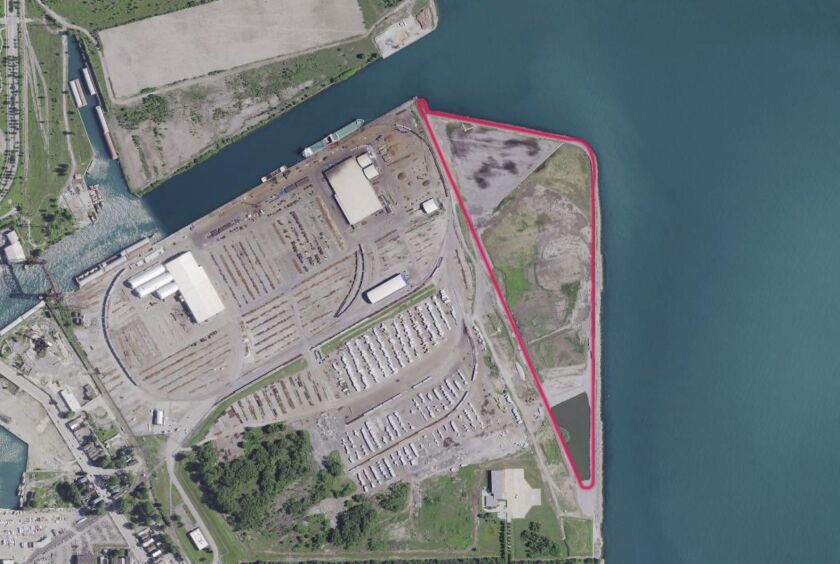The last time we read architect Daniel Burnham’s plan for an open public lakefront along Chicago’s entire shoreline, we saw nothing about burying it under 25 feet of tainted muck.
Yet that is the U.S. Army Corps of Engineers’ plan for 45 lakeshore acres on the Southeast Side that should instead be used to help complete Burnham’s vision. We trust the Corps will find a sensible alternative.
The site at the mouth of the heavily industrialized Calumet River was supposed to become parkland in 1995, linking Calumet Park on the south to Steelworkers Park on the north and chipping away at the last four miles of Chicago’s 29 miles of lakefront that are not yet public parkland.
Instead, under a change in the law, the Corps has continued to use the site as a “confined disposal facility” for sediment dredged from the Calumet Harbor and Calumet River each year to keep the channel open for tugboats, barges and ships going as far as the river’s “turning basin.” The shoreline site will reach capacity in 2022, so now the Corps wants permission to keep dumping until the accumulated sediment is 25 feet higher than the adjoining parks.
That’s a bad idea for five reasons.
- “We have enough toxic developments on the Southeast Side,” Amalia NietoGomez, executive director of the Alliance of the Southeast, told us. The Southeast Side is an “environmental justice” community already beset with pollution from a variety of sources, including contaminants from its industrial past, brownfields — including a site that was named a U.S. EPA Superfund site last year — and two Little League fields that recently turned out to be tainted with hazardous materials. In a new complaint, community activists have objected to the scrap shredder General Iron moving to a site on the Calumet River. Local community activists also have worked hard to stop fly-by-night companies from collecting hazardous waste, going bankrupt and leaving barrels of the waste sitting in their neighborhood.
“We have enough toxic developments on the Southeast Side.”
- Although the Corps would build protective berms, storing sediment tainted with mercury, PCBs and other toxins right next to the lake seems unwise at a time when rising water levels are weakening shoreline protections everywhere, threatening to wash the accumulated material right back into the lake. The Friends of the Parks says contaminants already are starting to leach into the lake — the source of our drinking water. As 35-year Southeast Side resident Marie Collins-Wright told us, “Why would you turn around and put more toxic [sediment] in an unsafe place?”
- Raising the land 25 feet would limit the ways the land can be used as public space once the Corps is finished with it, in 25 years or more. According to one Corps document, one suitable use would be a parking lot.
- Building what is essentially a raised landfill will increase future potential liability for the Chicago Park District and City of Chicago if they need to clean it up after they take possession of the land.
- Having another park in view rather than a raised landfill would make it easier to move ahead on the stalled redevelopment of the nearby 40-acre U.S. Steel site.
The Army Corps did look for other sites, but community residents opposed some sites. The residents also preferred that one site be used for a redevelopment that now is bringing jobs to an area that needs them.
“This is an opportunity that doesn’t come around very often,” said Ders Anderson, Greenways director for the environmental group Openlands. “It would be incredible to have public access on the lakefront by the Calumet River, where you can see the large ships. I think it would be a park that would attract people from all over Chicago.”
That’s why we urge the Corps to pay attention to public comments on their plan, which will be accepted until the end of the day Monday. And we encourage the mayor and every alderman who takes seriously Burnham’s grand plan for our precious lakefront to weigh in strongly.
One option that makes sense to us is a three-pronged program recommended by community groups and environmental organizations.
The Army Corps is accepting comments for the Final Chicago Area Waterway System Dredged Material Plan, Integrated Environmental Impact Statement through Aug. 17 by either email to: CELRC_Planning_Econ@usace.army.mil or by mail to: U.S. Army Corps of Engineers (ATTN: Planning Branch), 231 S. LaSalle St., Suite 1500, Chicago, IL 60604.
The first part of the plan would be to reduce the amount of tainted sediment that gets into the river and lake to begin with. Both ordinary dirt and contaminated materials can blow off storage areas and business parking lots or be caught up by rainfall runoff, making their way into the Calumet River. A serious effort to cover stored materials, limit runoff and regularly clean parking lots in the 2,500 acres of industrial land along the river would mean less — and cleaner — sediment.
The second part would be to re-use the cleaner part of the sediment from Calumet Harbor as fill where it’s appropriate, such as under roadbeds and in ecosystem restoration, instead of burying it.
The third part would be to ship the rest to a landfill that is not near residential communities. Although tainted, the sediment meets standards for going into any certified landfill.
Yes, these options are more complicated than continuing to dump everything in the same place. But didn’t Mr. Burnham tell us to make no small plans?
Let’s do him proud and rescue this important piece of Chicago’s lakefront.
Send letters to letters@suntimes.com.








